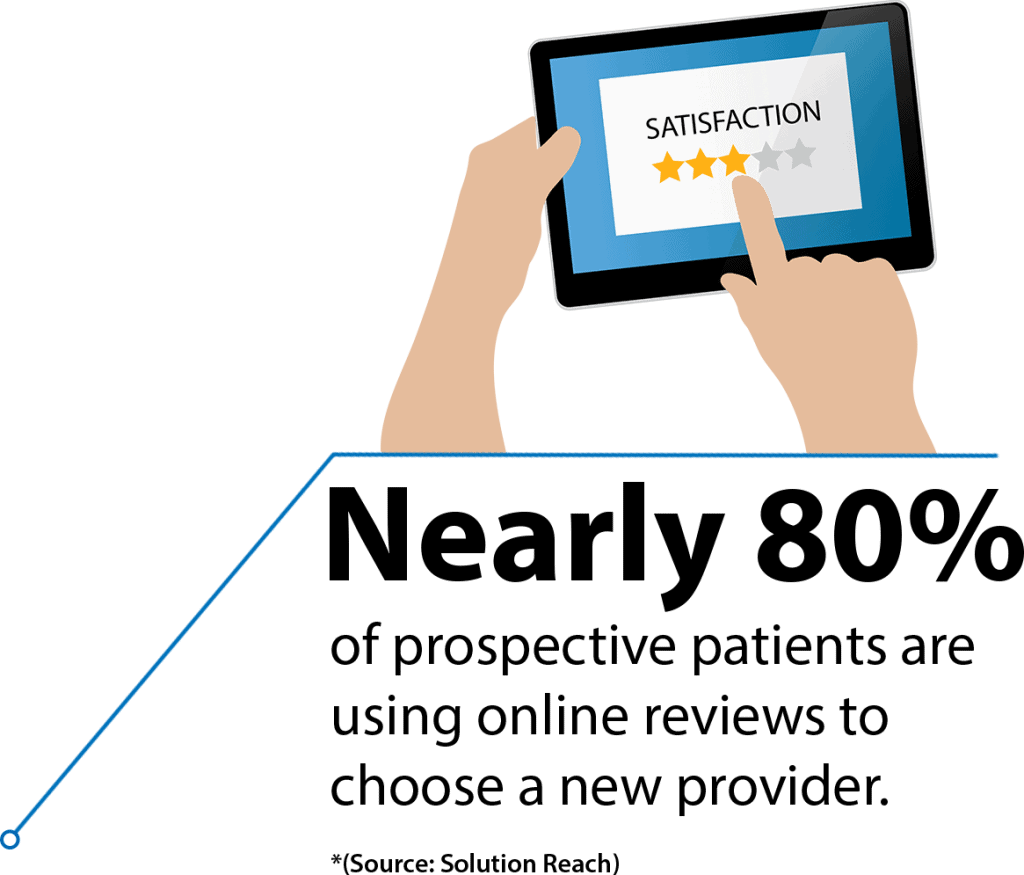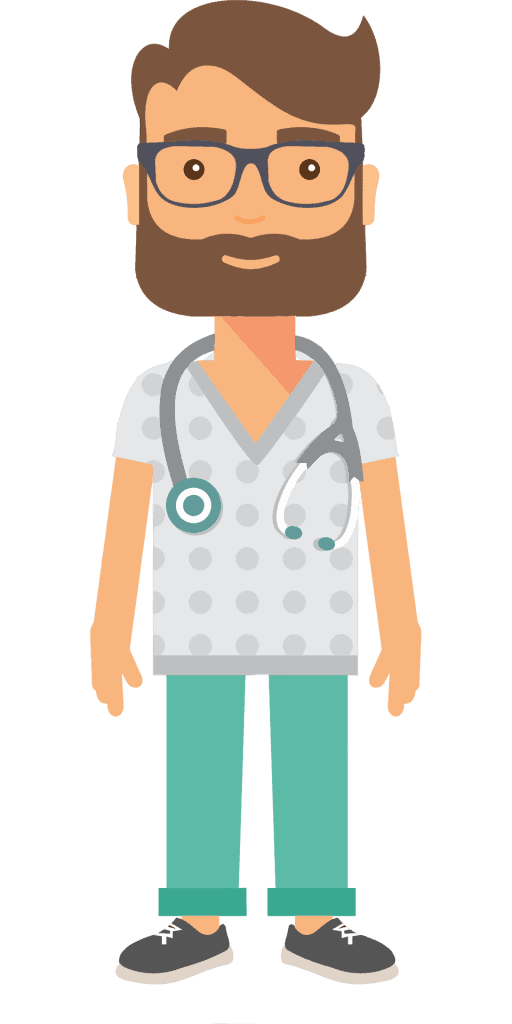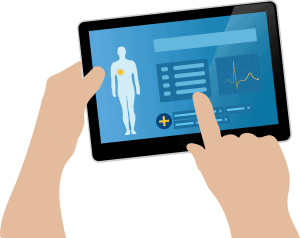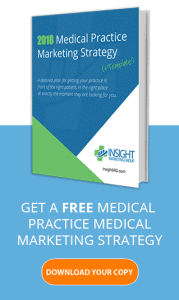“You’d better start swimming, or you’ll sink like a stone…”
Most of us know how Bob Dylan ended that lyric, but he probably never imagined how appropriate his words would be to describe today’s digital healthcare landscape.
Listen up.
Over 90% of online shoppers read online reviews, and more than 80% of Internet users believe that these reviews affect their purchase behavior.
Think this doesn’t apply to healthcare? Think again. More than 80% of prospective patients use online physician reviews to evaluate physicians.
Yes, 80%.
 Not only that, 8 out of 10 American Internet users (93 million people) have researched health topics online, and the hottest searched topics included specific diseases, procedures or treatments, health insurance, alternative treatments, and searching a particular doctor or hospital.
Not only that, 8 out of 10 American Internet users (93 million people) have researched health topics online, and the hottest searched topics included specific diseases, procedures or treatments, health insurance, alternative treatments, and searching a particular doctor or hospital.
As a result, many potential patients are now making healthcare decisions in the blink of an eye based off a quick peek at physician review scores, an eye-catching website or a responsive social media manager. For many, the days of blindly going to the practice or physician you were referred to by another physician (just because that’s where they said to go) are gone.
Once-trusted advertising sources like radio and billboards are proving more costly, returning reduced bang for the buck, and are becoming less and less effective at filling empty appointment slots because there is so much media competing for the patient’s attention.
The big question medical practices are now asking themselves is: how can we reach our ideal patients at the right time with the right message, and keep them happy and loyal? If potential patients are no longer reacting to traditional advertising and promotional methods like the good old days, then what are they responding to?
The answer? The Patient Value Journey.
The way a patient chooses their healthcare provider mirrors how consumers want a product or service. Below we’ll outline exactly how with real-world examples and describe how the 8-step Patient Value Journey can help you turn potential patients into confirmed appointments and, eventually, advocates of your practice.
P.S. You can follow along on the journey by downloading the Patient Value Journey infographic.
The Patient Value Journey
Every day, millions of Americans are embracing technology, from online search to wearables, transforming the patient journey at record-breaking speed. Google receives over 63,000 searches per second on any given day and, wouldn’t you know it, healthcare is the third most searched topic.
How can your practice capitalize on this present reality to drive more patient appointments both online and offline? The best marketing strategies begin and end with how a patient finds your practice and the process they embark on after they’ve had their first appointment.
Stage 1: Achieving Patient Awareness
A potential patient first becomes aware of your practice, your doctor(s), and your subspecialty during the Patient Awareness Stage. Perhaps they have a health problem or concern, are researching a health condition and potential treatment for a loved one, or are a caregiver researching on behalf of a client.
 In this early phase of the patient journey, the patient has a problem, and you present your practice as the solution while showing them what differentiates you from the practice around the corner.
In this early phase of the patient journey, the patient has a problem, and you present your practice as the solution while showing them what differentiates you from the practice around the corner.
Potential patients can become aware of your practice in a myriad of ways including:
- Seeing an advertisement about your practice
- Finding you on social media
- Receiving a referral from another doctor, friend or family member
- Viewing your practice website as a search result on Google
- Meeting at a health fair or community event
All these avenues present significant opportunities for your practice to reach potential patients both online and offline. Moreover, industry studies indicate that healthcare decisions are guided by the perceived quality of information. Meaning ease-of-use for online consumers trumps trust when it comes to engaging with health information online.
Americans are three times more likely to turn to WebMD for advice over government-accredited sites like the CDC or the FDA. WebMD’s top rank for user-friendliness (56%) more than offsets its lower score for trustworthiness (39%).
These findings underscore the necessity for your practice to establish itself as a trusted and user-friendly source of information for potential patients in your geographic location. If you can’t adapt to the end user, someone else will, leaving you in the dust.
CONSUMER EXAMPLE: Joe is looking to buy a new state-of-the-art flat screen TV for his living room. He wants to impress his friends and make his house the go-to place for watching football on Sundays.
Joe first does a Google search for flat screen televisions and sees an ad for a local electronics store running a special. He browses all the different models covered by the sale, files it away in his head for later but doesn’t purchase. He also reaches out to his friends and family on social media for their recommendations.
HEALTHCARE EXAMPLE: The chronic pain in Mary’s knee has been bothering her for several months. Her discomfort has gotten worse recently, making it increasingly difficult to walk and to play golf. She is looking for solutions and is considering having her knee looked at by a certified medical professional.
Mary does a Google search for ‘knee pain treatment’ in her geographic area and comes across an ad at the top of her search results page (Google AdWords) and clicks on that. She is now aware of a practice in her area that can help provide her with a solution.
Stage 2: Patient Engagement
After becoming aware of your practice, a potential patient will take action to learn more about you and your doctor(s). After catching their eye, you have triggered them to interact with you or their social circles.
There are numerous ways patients can engage in your practice including:
- Searching specifically by name for your practice on Google
- Visiting physician review sites to check your overall score
- Sharing, commenting or liking one of your social media posts
- Clicking on an ad or post that drives back to your website
- Asking peers (online or offline) about their experience with your practice
- Visiting your practice website
 Having the right digital marketing, social media, and website strategy in place when patients enter the Engagement stage is critical for bringing them to the subscription phase. As far as your practice’s online image is concerned, the adage holds true: you never get a second chance to make a first impression.
Having the right digital marketing, social media, and website strategy in place when patients enter the Engagement stage is critical for bringing them to the subscription phase. As far as your practice’s online image is concerned, the adage holds true: you never get a second chance to make a first impression.
When new visitors arrive at your website, you only have a few minutes (if you’re lucky) to make a lasting impression and gain their trust. Your site needs to have an eye-catching design, have killer content, and be easy to navigate. Also critical to both patient awareness and engagement is making sure your web pages are well-tailored for search engine optimization (SEO), so you can attract patients who are looking for your services to your website.
In addition to being desktop-friendly, your website now needs to be mobile-friendly as well. In 2016, mobile internet usage surpassed desktop usage for the first time. In other words, if your site isn’t mobile-friendly, you might risk losing a significant amount of potential patient leads to your competitor down the street.
CONSUMER EXAMPLE: Joe is leaning toward buying a TV from the store that has the sale going on. He starts to check out the electronic store’s website as well as online review sites to find out more about the store’s customer service and return policies.
HEALTHCARE EXAMPLE: Mary goes about her research in much the same way as Joe. Using the results of her Google search, she visits the practice website to get a feel for the group and the knee specialists there. She’ll watch a patient testimonial video and look at the practice on Facebook. Mary then visits online reputation management sites such as RateMDs.com, Healthgrades.com, etc., to find out what others think of her potential surgeon.
![]()
Stage 3: Patient Subscription
In stage 3, your potential patient will opt in to view or receive additional content from your practice. Here, a prospective patient likes what they have seen so far, but isn’t ready to commit to an appointment just yet. They are, however, seriously considering you for their healthcare needs.
What patient actions can you expect to see in this phase of the patient journey?
- Joining an email list for your practice newsletter
- “Liking” your page(s) on social media to receive updates in their newsfeed
- RSVPing to attend a talk or seminar
- Downloading a digital asset (white paper, checklist or eBook) from your practice website
- Signing up for a webinar discussing a particular pain point or treatment option
There are a several tactics you can employ to optimize patient subscriptions.
- Keep your blog updated and post relevant content that your readers can share across their social networks
- Respond (ideally in real-time) to comments on your social media pages
- Add social sharing buttons to your blog posts, newsletters, and general emails
- Encourage your readers to share their posts on their social media networks
CONSUMER EXAMPLE: Joe joins the email list of the store to make sure he doesn’t miss a good deal or sale coming up in case he misses out on the current promotion. This subscribes him to regular email lists and communication from the store. On the store’s website, Joe reads an article on “The Best Ways to Supe Up Your Flat Screen TV.”
HEALTHCARE EXAMPLE: After watching the patient testimonial video, Mary finds that orthopedic practice on Facebook and “Likes” the page to receive updates in her newsfeed. There is also a signup button on the practice’s Facebook page to join their mailing list. Mary clicks on it to receive their regular practice newsletter so she can experience the “voice” of the practice. This is a big decision after all!
Stage 4: Conversion
 In the Conversion phase, your potential patient is satisfied with their research and is now ready to become a patient of your practice with a scheduled office visit. Congratulations, you have made a significant enough impression on the patient that they have chosen you above your competition!
In the Conversion phase, your potential patient is satisfied with their research and is now ready to become a patient of your practice with a scheduled office visit. Congratulations, you have made a significant enough impression on the patient that they have chosen you above your competition!
Upon entering the conversion stage, a patient will:
- Book an appointment and schedule an office visit via your website or by phone
- Set up a time for an in-office consultation about services
- Not cancel the appointment
To ensure a patient’s smooth flow from subscription to conversion, you need to make the transition easy for them. If a potential patient spends precious minutes on your website trying to figure out how to contact you or book an appointment, chances are they’ll just give up in frustration. Your site should make it easy for patients to schedule a visit on every single page.
It is possible that potential patients move directly from the Engagement phase to Conversion. This depends mainly on your subspecialty and the ancillary services you offer.
CONSUMER EXAMPLE: Joe buys his flat screen TV and is thrilled to be bringing it home. He has put a lot of time and effort into his search and is greatly anticipating his first precious moments on the couch watching his favorite football team.
HEALTHCARE EXAMPLE: Mary books an office visit with the orthopedic knee surgeon via the practice’s website. She has a good feeling about him and looks forward to having his input.
Stage 5: Achieving Diagnosis and Treatment
 In the diagnosis and treatment phase of the patient journey, your medical team takes the baton to diagnose and prescribe treatment. In return for their visit to your office, the patient receives immediate value in the form of a diagnosis or treatment plan complete with next steps following the appointment.
In the diagnosis and treatment phase of the patient journey, your medical team takes the baton to diagnose and prescribe treatment. In return for their visit to your office, the patient receives immediate value in the form of a diagnosis or treatment plan complete with next steps following the appointment.
Depending on the condition, the patient may warrant observation or conservative treatment over multiple visits, additional testing, and analysis, or drug therapy and monitoring.
CONSUMER EXAMPLE: For the consumer journey, this stage differs a bit. For Joe, this stage is all about receiving initial value and excitement from his purchase. He loves it and can’t wait to invite his friends over to show it off.
HEALTHCARE EXAMPLE: Mary gets her initial diagnosis and conservative treatment plan from the orthopedic specialist. She is relieved that she has taken action to begin to deal with the knee pain that has been dampening her quality of life.
Stage 6: Ascension
 As part of their journey, your patients may or may not be prescribed additional treatments depending on their condition and their response to initial treatment(s) in the diagnosis and treatment phase.
As part of their journey, your patients may or may not be prescribed additional treatments depending on their condition and their response to initial treatment(s) in the diagnosis and treatment phase.
Some patients will receive continued treatment as needed, others may be referred to supplementary services in or outside of the practice, and others may require surgery and rehabilitation.
CONSUMER EXAMPLE: Joe has got his TV set up, but his home theater is missing something. He wants to incorporate a surround sound system and sync all his media devices to each other. He had a good experience before, so without hesitation, he knows what store he wants to purchase from again.
HEALTHCARE EXAMPLE: Over the course of six months, Mary first tries physical therapy and then injections to try and stem her knee pain. When these methods fail to provide continued relief, her surgeon recommends total knee replacement surgery, given her most recent X-rays show bone on bone deterioration of her knee joint. She has “ascended” up the treatment ladder and has committed to having surgery with the practice.
Dependent on each patient’s prognosis, medical history, and how they respond to treatment, their journey may be longer or shorter than Mary’s or Joe’s.
Stage 7: Advocacy
 In the Advocacy stage, your patient has completed their treatment protocol and is satisfied with the outcome of their care. They are now in a position to advocate for your practice both online and offline.
In the Advocacy stage, your patient has completed their treatment protocol and is satisfied with the outcome of their care. They are now in a position to advocate for your practice both online and offline.
Patients can share positive feedback with the world by:
- Providing an online review or rating on your physician(s) review website(s)
- Taking part in a video testimonial to share their brilliant outcomes and benefits with other potential patients
- Become the subject of a case study
Patient advocates are one of your most valuable assets. Patient success stories create a connection, build trust, credibility, and interest to motivate potential patients to answer a call-to-action.
One of the things we do at our agency is lead with #PatientFirst marketing. When your patients become advocates, you can make them the focus of your marketing efforts to improve the overall patient journey and make it easier for potential patients to enter the Awareness stage.
CONSUMER EXAMPLE: Joe is over the moon with his new ‘smart’ home and surround-sound tech. He raves about his new setup to his family and friends and has written a fantastic review on the store’s website.
HEALTHCARE EXAMPLE: Mary couldn’t be happier. She is walking pain-free again following rehabilitation and is cleared to play golf once more. She is grateful to the practice and has agreed to write a review on Vitals.com and shoot a patient testimonial video for her surgeon in a few weeks.
Stage 8: Patient Promotion
 Once your patient is completely discharged from care, they will continue to tell others about the high-level of service, quality of care, and success they experienced. In this stage, your patient continues to provide value for your practice by organically sharing their experience long after they have stopped scheduling appointments by:
Once your patient is completely discharged from care, they will continue to tell others about the high-level of service, quality of care, and success they experienced. In this stage, your patient continues to provide value for your practice by organically sharing their experience long after they have stopped scheduling appointments by:
- Offering word of mouth referrals to social circles and peers
- Providing unsolicited posts and comments on social media
- Volunteering to be a patient liaison or support group leader
These patient ‘ambassadors’ are perhaps your greatest marketing resource. They provide free, organic online advertising reach and leverage, enhance customer engagement, and significantly improve search rankings. Having patients promote your practice in this way helps to establish trust and boost comfort levels with potential patients.
CONSUMER EXAMPLE: After thinking about it a bit more, Joe has posted glowing reviews on numerous consumer websites, forums, and on social media. Whenever he sees someone in his network asking for television and home theater recommendations, he immediately comments and shares the joy and satisfaction he has received from his purchase experience.
 HEALTHCARE EXAMPLE: Mary regularly posts pictures of herself playing golf with her friends on social media. She never forgets to thank the practice in her posts. When she sees a Facebook post come up about the practice, she shares it with her group and shouts from the rooftops to anyone in need of a recommendation of a good knee specialist.
HEALTHCARE EXAMPLE: Mary regularly posts pictures of herself playing golf with her friends on social media. She never forgets to thank the practice in her posts. When she sees a Facebook post come up about the practice, she shares it with her group and shouts from the rooftops to anyone in need of a recommendation of a good knee specialist.
Making the Patient Value Journey Work For You
Today, a significant part of a patient’s journey happens after your office closes for the day and often beyond the care you provide. A large part of how a patient interprets their overall satisfaction is by your content being easily accessible online, how they found you and booked an appointment and the way they shared their health journey among their social networks after they received treatment.
The patient-physician relationship has become a symbiotic two-way relationship. You need to get in front of your patients, who have more choice and clout. Your patients can provide transparent feedback and positively impact the start of other patient journeys more than ever.
By mapping your medical practice’s goals along the Patient Value Journey, you can better understand your audience’s mindset and behavior when your practice interacts with them and hone in on short-term, quarterly “wins” and activities that contribute to reaching your long-term goals.










